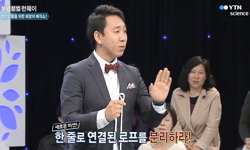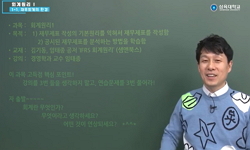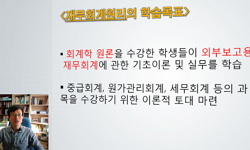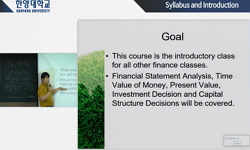본 고는 1999년 6월 25일 국립국악원에서 주최한 ‘거문고 역사축제’의 국립국악원 위촉곡인 정대석 작곡의 거문고 합주곡 <미리내>의 전체적인 음악구조를 분석함으로써, 정대석 작품...
http://chineseinput.net/에서 pinyin(병음)방식으로 중국어를 변환할 수 있습니다.
변환된 중국어를 복사하여 사용하시면 됩니다.
- 中文 을 입력하시려면 zhongwen을 입력하시고 space를누르시면됩니다.
- 北京 을 입력하시려면 beijing을 입력하시고 space를 누르시면 됩니다.
https://www.riss.kr/link?id=T8955912
- 저자
-
발행사항
용인 : 용인대학교, 2001
-
학위논문사항
학위논문(석사) -- 용인대학교 예술대학원 , 국악학과 거문고전공 , 2001
-
발행연도
2001
-
작성언어
한국어
- 주제어
-
KDC
679.72 판사항(4)
-
발행국(도시)
경기도
-
형태사항
ix, 82 p. : 악보 ; 27 cm.
- 소장기관
-
0
상세조회 -
0
다운로드
부가정보
국문 초록 (Abstract)
본 고는 1999년 6월 25일 국립국악원에서 주최한 ‘거문고 역사축제’의 국립국악원 위촉곡인 정대석 작곡의 거문고 합주곡 <미리내>의 전체적인 음악구조를 분석함으로써, 정대석 작품중에서 독주곡과 중주곡에서 보여지지 않았던 합주곡의 특징을 살펴보고, 또한 작곡자의 독특한 작곡기법이 거문고 창작음악에 미친 영향을 알아보는데 그 목적을 두고 있다.
연구방법은 <미리내>에서 사용된 조현법과 음계를 분석하고, 각 악장별로 나누어 형식, 선율, 리듬, 연주법을 중심으로 분석하였으며 결과는 다음과 같다.
첫째, 조현법은 기존의 전통음악과 정대석 작품의 거문고 독주곡과 중주곡에서 사용된 조현법과는 다른 독특한 조현법 즉, 기존안족의 1/3크기로 축소 제작된 보조안족을 현침과 기존 안족사이에 얹어 현 하나에 2-3개의 음을 얻음으로써 새롭고 다양한 음색 및 연주법의 개발을 가져왔다.
둘째, 음계는 제1악장과 제2악장 모두 F(□)음을 중심음으로 하는 F(□□) - G(□□) - A^b(□□) - B^b(□□) - C(□□) - e^b(黃)의 6음음계이다.
셋째, 형식을 보면 제1악장「개밥바라기」는 도입부 + A(a+b+a') + B(연결구① + c + 연결구② + d + 연결구③ + e) + A'(a) + Coda로 구성되어 있으며, 제2악장「미리내」는 도입부 + A(a+a'+b) + B(연결구 + c + d + e) + A'(a+a'+b) + Coda로 구성되어 있는 A - B - A'의 3부분 형식으로 이루어져 있다.
넷째, 선율은 대부분 4마디를 기본으로 하는 여러개의 규칙적인 phrase(악구)로 구성되어 있으며, 이러한 phrase안에서 거문고I-II가 주선율로 진행하고 있으며, III-IV가 주선율의 보조적인 선율로 진행하며, V-VI이 특수 효과적인 선율로 각기 짝을 이루어 다른 역할로 진행하고 있지만, 거문고 6파트 모두가 상호 유기적인 관계에 의해서 진행하고 있다. 또한, 모방기법이 주를 이루며 반복진행·동형진행·순차진행·옥타브 진행등을 볼 수 있다.
다섯째, 리듬형태는 제1악장은 11개의 동기(a, b, c, d, e, f, g, h, i, e', d')가, 제2악장은 5개의 동기(a, b, c, d, e)가, phrase 안에서 확대 및 변형으로 다양한 리듬형을 제시하고 있다.
여섯째, 연주법은 기존의 전통음악과 창작음악에 사용되어왔던 연주법이 사용되었으며, 또한 작곡자의 독특한 작곡 기법을 통하여 다양하고 현대적인 연주법(현에 술대를 붙여서 내는주법, 술대로 현을 두드려서내는 주법,양손 트레몰로 주법, 술대로 현을 문지르거나 비비는 주법)이 사용되었다.
이와 같이 정대석 작곡의 거문고 합주곡<미리내>는 거문고I-II(주선율), III-IV(보조선율), V-VI(특수 효과)이 짝을 이루어 서로 상호 유기적인 관계에 의해서 각기 다른 진행을 하며, 독특한 조현법과 현대적인 연주법을 통하여 풍부한 음량과 다양한 음악적인 표현을 보여주고 있다.
다국어 초록 (Multilingual Abstract)
This study has a purpose to examine the characteristics of Jeong Dae-suk's ensemble, which are not found in his solo or duo pieces, and the influence of the composer's unque technique on creative music of Keomungo by generally analysing the musical st...
This study has a purpose to examine the characteristics of Jeong Dae-suk's ensemble, which are not found in his solo or duo pieces, and the influence of the composer's unque technique on creative music of Keomungo by generally analysing the musical structure of Jeong Dae-suk's Keomungo ensemble Mirinae, which was invited to 'Keomun History Festival' hosted by the National Classical Musical Institute on June 25, 1999.
As a study method, this paper analyzes the way of composing strings and the scale by dividing each movement with a form, melody, rhythm and performance, and the following are the results.
First, unlike the existing traditional music and other methods of composing strings used in his Keomungo solo and duo pieces, Jeong Dae-Suk's unigue way of composing strings has brought various new musical tones and performance technique by obtaining 2-3 motes per string from 1/3 size extra set laid between the existing two sets.
Second, the scale is composed of 6 notes based on F(伏)-G(고)-A^b(중)-B^b(임)-C(남)-e^b(黃) in the first and the second movement.
Third, the structure consists of A-B-A', that is, the first movement(Kebapbaragi)of the intro+A(a+b+a')+B(link ①+c+link ②+d+link③+e)+A'(a)+Coda and the second movement(Mirinae)of the intro A(a+a'+b)+B(link+c+d+e)+A'(a+a'+b)+Coda.
Fourth, melody is composed of several regular phrases based on four phrases, and Keomungo I-II appears as main in these phrases. III-IV support these main phrases, and all six parts of Keomungo proceeds in interacting relationship while V-VI play different roles in paris. Also, imitating technique while V-VI play different roles in paris. Also, imitating technique mainly shows up and repetition, the same forms, proceeding in order and octave proceeding are also found.
Fifth, rhythm suggest various forms by extension and transformation with the first movement of five motives(a, b, c, d, e).
Sixth, for performing technique, those that have been used in traditional music and creative music, and various modern techniques through the composer's unique composing skills(technique by attaching a plectrum to strings. beating strings with a plectrum, tremolo for both hands, rubbing strings with a plectrum).
As written above, Jeong Dae-suk's Keomungo ensemble<Mirinae>plays in mutually organic relationship in Keomungo I-II(main), III-IV(back up melody), V-VI(special effect), and it shows rich tones and various musical expressions through original ways of stringing and modern performance.
목차 (Table of Contents)
- 목차
- 국문초록 = iv
- I. 서론 = 1
- 1. 연구목적 = 1
- 2. 연구범위 및 방법 = 2
- 목차
- 국문초록 = iv
- I. 서론 = 1
- 1. 연구목적 = 1
- 2. 연구범위 및 방법 = 2
- II. 본 론 = 3
- 1. <미리내>의 작품배경 = 3
- 2. 연주법 설명 및 연주 편성 = 4
- 3. 조현법 및 음계 = 5
- 1) 조현법 = 5
- 2) 음계 = 9
- 4. 악장별 분석 = 9
- 1) 제1악장 「개밥바라기」의 분석 = 9
- 2) 제2악장 「미리내」의 분석 = 30
- III. 결론 = 50
- 참고문헌 = 52
- ABSTRACT = 53
- 부록 악보 = 54












